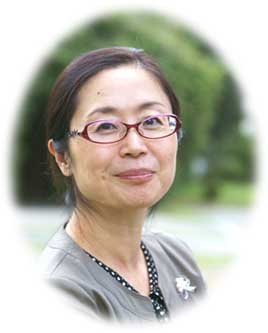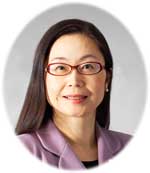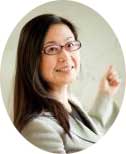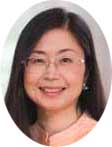During attending 43th annual meeting of Society for Neuroscience, the biggest society in the field of neuroscience, I had a chance to be interviewed as one example of career development and as a mentor.
It was a unique experience for me.
Below is the messages I thought to talk (not actual one).
I got questions just before the interview.
The staff also sent me an e-mail message with some tips to be interviewed, including dress code.
Unfortunately, I do not have a good ones...
Interview contents:
It was a unique experience for me.
Below is the messages I thought to talk (not actual one).
I got questions just before the interview.
The staff also sent me an e-mail message with some tips to be interviewed, including dress code.
Unfortunately, I do not have a good ones...
Interview contents:
Joys of Science
Career
· How did you first decide to
become a neuroscientist?
When I
was a high school student, I liked psychology and linguistics, but I entered a
dental school because I would like to help others. Then, I became a graduate
student because I found I prefer research that has more speed, change, and
freedom. I first worked on craniofacial development, but because I bumped into
a mutant rat that has no eyes and no nose, I have interest in that mutated
gene, Pax6. Since Pax6 is also important in brain development and neurogenesis,
I have entered neuroscience. Now I am working on animal model of autism, which
is the topic very close to my original dream.
· What is an example of a
great day that you have had in the lab? What made this experience impactful?
I love
beauty of the nature. When I come across with visually high impact data, I feel
very happy to see them.
Development
· What drives you to continue
in the field?
Passion
for science. I love something with speed, change, and freedom, which can be the most likely obtained in science fields.
· What are the rewards of a
career in neuroscience?
To see
the development of science. You know, neuroscience is the cutting-edge field,
and lots of new findings come out every month, every week, even in every day
around the world. It is really a fun for me.
· What are challenges that
you have faced during your career and how did you overcome them?
I could
not have a chance to study abroad. Instead, I have tried to attend
international meetings and almost always I give seminars in nearby cities or
countries so that I can make friends and networks.
· What advice would you give
to young investigators to encourage them to stay in the pipeline?
Make good friends
and obtain nice mentors. Do not compare with others. Everyone is unique.
Mentoring
Advice
· What types of advice are
needed at different stages in a neuroscience career?
I would like to say, chose your career in 2-dimensionally. One axis is you like it or don’t like it, and the other is you are good at it or bad at it. You can be successful if you can choose your career that you like and that you are good at it. Of course, you should not choose one you dislike and you are bad at. Then which you should choose something you like a lot but you are not good at it, or that you do not like so much but you are good at it. I would advise you should choose the latter. It is a good way to continue your career to choose something you are good at it rather than you just like it.
I would like to say, chose your career in 2-dimensionally. One axis is you like it or don’t like it, and the other is you are good at it or bad at it. You can be successful if you can choose your career that you like and that you are good at it. Of course, you should not choose one you dislike and you are bad at. Then which you should choose something you like a lot but you are not good at it, or that you do not like so much but you are good at it. I would advise you should choose the latter. It is a good way to continue your career to choose something you are good at it rather than you just like it.
· Do you have any tips on the
best way to approach an unknown neuroscientist for career advice?
· What are steps that are
useful to take in preparation for a conversation on career advice?
Mentors
· What is your most rewarding
experience as a mentor?
To see
mentees grow. Actually, students, postdocs, young faculties make good progress.
· How can mentors best manage
relationships with mentees and mentoring relationship requests while managing other
responsibilities?
I am not
sure.
· How can a mentor best
advise a mentee that will be pursuing a career away from the bench and the
mentor’s area of expertise?
I am not
sure. In that case, he or she should consult other suitable mentors in that
area.
Mentees
· When has a mentor helped
you make better career choices?
· What is your most rewarding
experience as a mentee?
Additional Questions if Time Permits
· Can you think of any
moments early in your career that helped you know that neuroscience was your
passion?
· What has your experience
been in the field (training, attending conferences, etc.)?
· Are there any changes in
advice given with today’s budgetary limitations?
· What should a good mentor
strive for in their mentoring relationships?
· How have you identified
mentors throughout your career?
Watch out
around me. It’s just like observation in science. You can find suitable mentors
in your institute, or in the same scientific field if you look around.
********************
TIPS FOR YOUR VIDEO INTERVIEW
The interview questions will be provided prior to
filming. Below are some tips for speaking in front of a camera.
·
Practice your delivery. Allow time to present the information
at an easy and unrushed pace.
·
Speak naturally and enunciate. If you’re someone
that talks with your hands, practice keeping them still. Hand movements
distract the viewer. Also, keep head movements to a minimum.
·
Speak directly to the interviewer as if you are
talking to a single audience member 1:1. Avoid looking at the camera.
·
Microphones are worn 6 inches below the chin for best
sound. Avoid touching the microphone. Make sure it is placed somewhere that
does not rub against your clothing.
·
Be yourself. Once
you begin speaking you’ll find that the information will flow smoothly. To maintain
positive energy in your voice, smile while you are speaking. If you are sitting
or standing during the interview, keep your shoulders back for good posture.
Stay relaxed and stationary.
·
Dress appropriately. Wear pastel or light colors. Avoid white, red and black. Avoid striped and
patterned clothing as it does not transmit well on camera because it is
visually distracting.
·
Arrive a few minutes early to the interview to get oriented.
Thank you









